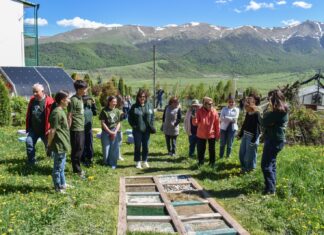LOS ANGELES — If the current upsurge in the number of conferences dealing with the contemporary Armenian reality, award-winning documentaries, fine art exhibits, book events at Abril Books, concerts, fundraisers, festivals showcasing Armenian food, arts and crafts, high-tech schools and IT manufacturing facilities both in the homeland and the diaspora is any indication, it would seem Armenian culture is undergoing a renaissance.
The LARK Musical Society has resumed its Dilijan Chamber Music Concert series after an almost five-year hiatus. Recently, the National Chamber Orchestra of Armenia offered a concert at the Monastery of the Mkhitarist Congregation on the island of San Lazzaro in Venice to an enthusiastic audience that had packed the church. The British literary magazine Wasafiri is publishing its winter 2024 special issue, to be released in December, to display “a rich tapestry of modern Armenian voices.”
In 2024, Armenia hosted the second leg of the prestigious Black Sea Lit Projects Conference that aims to open dialogue between nations in the Black Sea area and beyond.

The Moonq High-Tech School of Artsakh that had had to leave everything behind in the September 2023 exodus has reopened in Yerevan to educate local students in software programming. These are just a few examples. It is perhaps true that the darker the skies, the more visible the stars.
And these are indeed times of darkness for the Armenian people (and for the rest of the world, alas!) As iterated at the November 2, University of Southern California (USC) Dornsife Institute of Armenian Studies Symposium, titled “Artsakh Uprooted: Aftermaths of Displacement,” the thousands killed in the recent Artsakh Wars, the ongoing threats to Armenia’s security and the exodus of the entire population of Artsakh following a nine-month blockade have set a new standard for trauma: “We’ve never seen something like this.”

Yet, rather than wallow in doom and gloom, the symposium showcased a narrative that goes beyond victimhood. Trauma was resignified as a force that contributes to resilience. Trauma empowers us by creating connection and solidarity with the species, the participants affirmed. The diversity of the diaspora was celebrated as a gift that makes it possible to cross boundaries and to connect.










